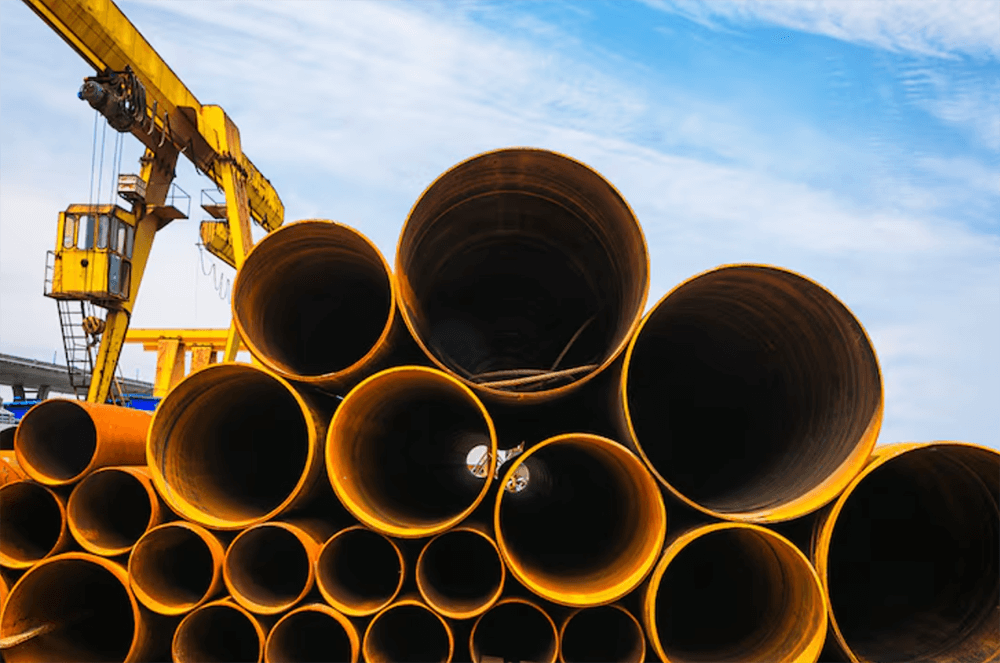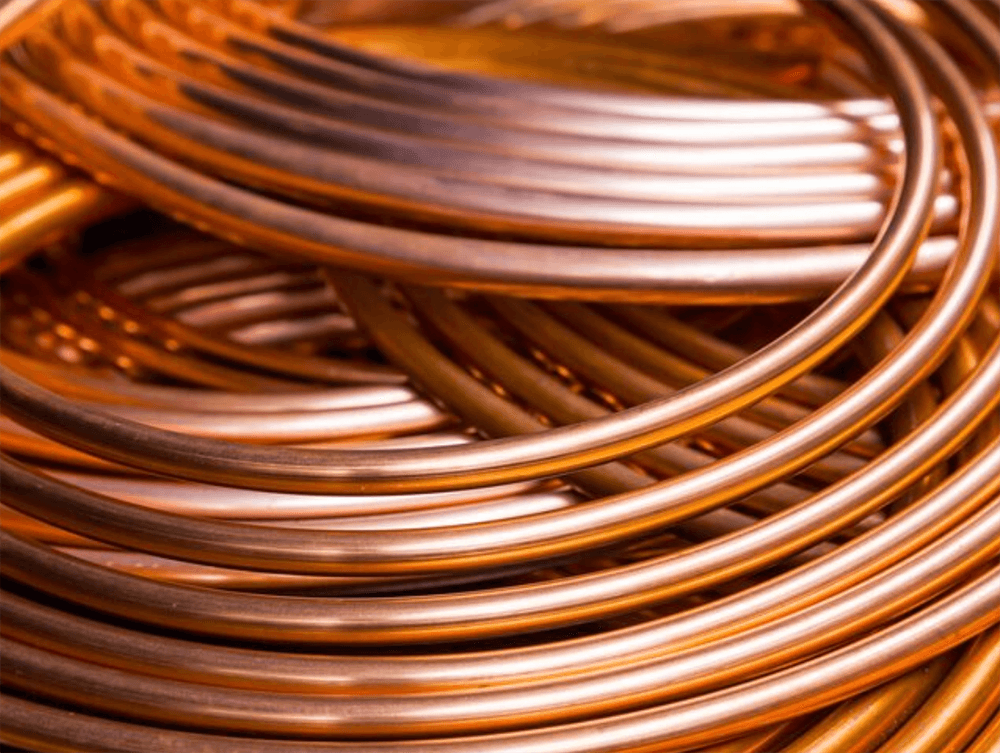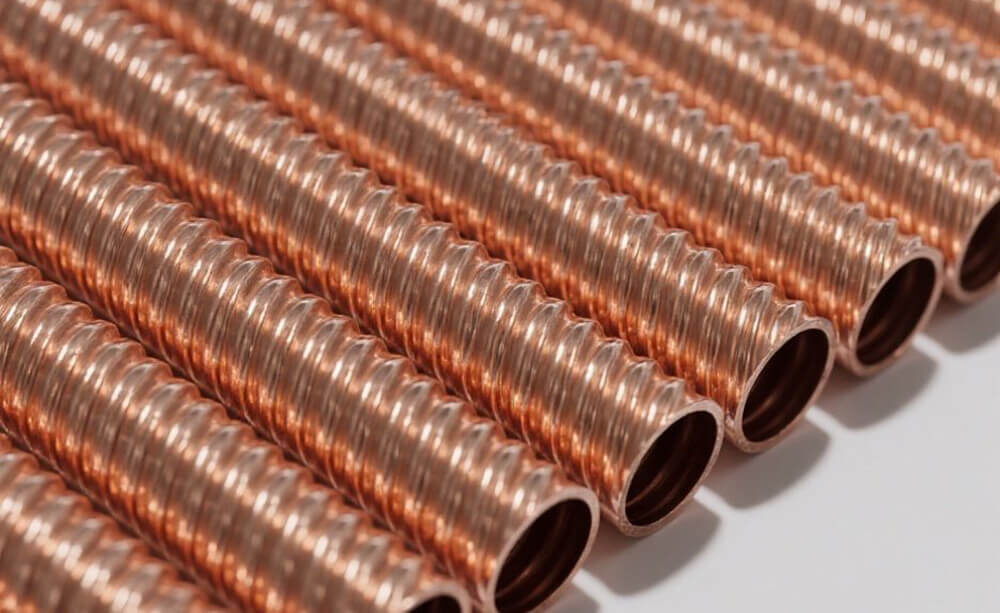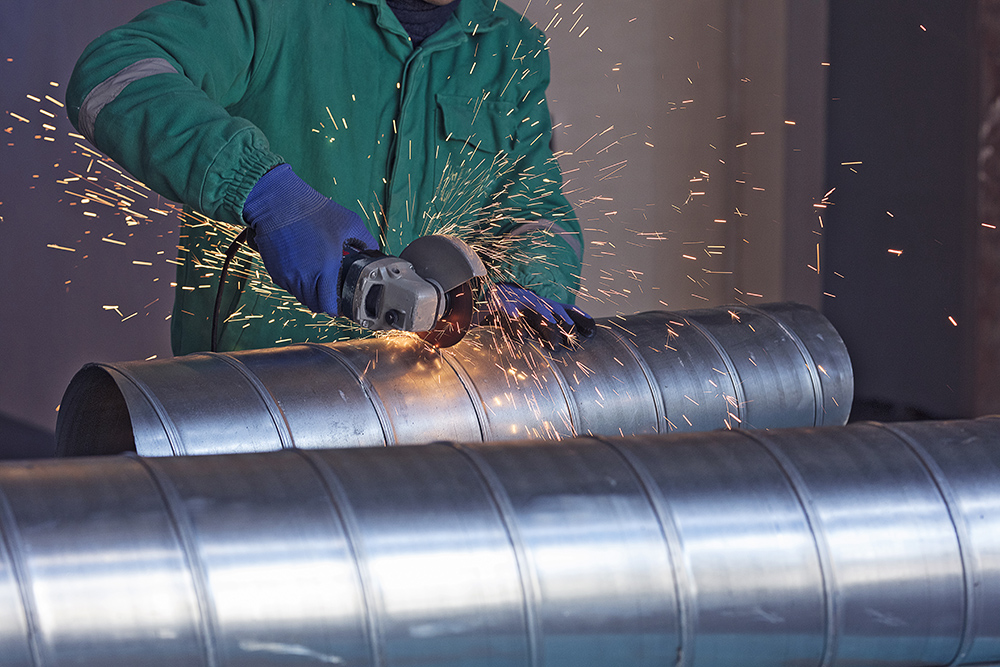Fin-tube copper tubes play a crucial role in waste heat recovery systems, serving as the core components for achieving energy conservation, reducing consumption, and enhancing energy utilization efficiency. Their application principles and advantages are primarily reflected in the following aspects:
Application Principles of Fin-Tube Copper Tubes in Waste Heat Recovery Systems
The core of a waste heat recovery system is the heat exchanger. As the heat transfer elements within the heat exchanger, fin-tube copper tubes operate based on the following principles:
Heat source side (waste heat fluid side): Exhaust gases (such as boiler flue gas, industrial furnace exhaust, engine exhaust, etc.) or waste liquids (such as high-temperature wastewater from industrial production) containing a large amount of residual heat flow through the exterior of the finned copper tubes (i.e., the fin side).
Heat absorption side (working fluid side): Relatively low-temperature fluids (such as air, water, heat transfer oil, etc.) flow through the interior of the finned copper tubes.
High-efficiency heat transfer: The waste heat fluid transfers heat to the fins on the exterior of the copper tubes, which is then rapidly conducted through the copper tube walls to the working fluid inside. The presence of fins significantly increases the heat exchange surface area, making the heat transfer process driven by the temperature difference between the waste heat fluid and the working fluid more efficient.
Heat recovery and utilization: The heated working fluid (e.g., heated air can be used for preheating combustion air or drying materials; heated water can be used for producing hot water or providing heating; heated thermal oil can be used for other process heating applications) is transported to production or living areas that require thermal energy, thereby achieving the recovery and reuse of waste heat.

Advantages of finned copper tubes in waste heat recovery systems
High-efficiency heat transfer performance:
Increased heat transfer area: The presence of fins increases the heat exchange area by several times or even dozens of times compared to smooth tubes, significantly enhancing heat transfer efficiency and enabling the recovery of more heat in a smaller volume.
Excellent thermal conductivity of copper: Copper is an excellent thermal conductor, ensuring that heat is quickly transferred from the waste heat fluid to the fins and efficiently conducted to the medium inside the tube, minimizing temperature loss during the heat transfer process.
Optimized gas-side heat transfer: In waste heat recovery, one side of the fluid is typically a gas (such as flue gas), which has a lower heat transfer coefficient. Fins significantly increase the heat transfer area on the gas side, effectively compensating for the gas’s insufficient heat transfer capability and thereby improving the overall heat transfer coefficient.
Excellent corrosion resistance:
Many industrial exhaust gases or waste liquids are corrosive. Copper tubes exhibit good corrosion resistance against various corrosive media (such as moist air, certain acidic or alkaline condensate), enabling finned copper tubes to maintain a long service life even in corrosive environments.
Compact structure, space-saving:
Due to their high heat transfer efficiency, finned copper tubes enable heat exchangers to be designed more compactly, occupying less space. This offers significant economic and spatial benefits for industrial facilities or buildings with limited floor space.
Easy to process and customize:
Copper’s excellent ductility allows it to be easily processed into various fin configurations (such as high fins, low fins, internal threads, corrugated, etc.) and pipe layouts to accommodate different operating conditions and fluid characteristics, achieving optimal heat transfer performance and pressure drop balance.
Wide temperature range applicability (depending on specific alloy and operating conditions):
While copper has limitations at extremely high temperatures, finned copper tubes can operate stably and reliably in many medium-to-low-temperature waste heat recovery applications.
Specific application examples of finned copper tubes in waste heat recovery systems
Boiler/industrial furnace flue gas waste heat recovery: High-temperature flue gas is passed through a finned copper tube heat exchanger to heat fresh air (as combustion air) or water (as boiler feedwater, domestic hot water, or heating water), significantly improving the overall thermal efficiency of the boiler or furnace.
Industrial process waste heat recovery: Recovering heat from high-temperature gases or liquids emitted from industries such as petrochemicals, metallurgy, and glass manufacturing, for use in preheating raw materials, heating, or other process stages.

Air conditioning condensation heat recovery: In large central air conditioning systems, utilizing the condensation heat emitted by refrigeration units (typically through finned copper tube condensers) to recover heat for providing domestic hot water or preheating fresh air.
Engine exhaust heat recovery: Recovering heat from the exhaust of internal combustion engines or gas turbines for heating, power generation (waste heat power generation), or driving absorption refrigeration.
Drying equipment heat recovery: During the drying process, the large amount of moist hot air discharged passes through a finned copper tube heat exchanger to transfer heat to the incoming cold air, thereby reducing drying energy consumption.
Application Principle of Fin-Tube Copper Tubes in Engine Exhaust Heat Recovery
Exhaust gas as a heat source: The high-temperature exhaust gas emitted by the engine (typically at high temperatures but with a low heat transfer coefficient) flows through the exterior of the fin-tube copper tubes (the fin side).
Working medium absorbs heat: The interior of the fin-tube copper tubes typically carries the working medium that requires heating, such as:
Water: Can be heated into hot water for vehicle heating, defrosting, or providing domestic hot water on ships.
Air: Can preheat combustion air entering the engine to improve combustion efficiency; or used for vehicle interior heating.
Organic working fluid: In an Organic Rankine Cycle (ORC) system, the finned copper tubes act as an evaporator, transferring engine exhaust heat to a low-boiling-point organic working fluid, causing it to vaporize, expand, and generate electricity or drive machinery.
High-efficiency heat transfer: Since engine exhaust is a gas with a low heat transfer coefficient, fins significantly increase the heat transfer surface area in contact with the exhaust gases. Copper’s excellent thermal conductivity ensures that heat is rapidly transferred from the high-temperature exhaust gases to the fins, then efficiently conducted to the working fluid inside the tubes. This combination maximizes waste heat recovery efficiency.
Advantages of finned copper tubes in engine exhaust waste heat recovery
Extremely high heat transfer efficiency: This is the core advantage. Engine exhaust temperatures are high, but the heat transfer coefficient on the exhaust side is low. Fins greatly expand the heat transfer area, effectively compensating for the low heat transfer efficiency of gases, thereby achieving significant heat recovery within a compact volume.
Compact structure: Vehicles and ships have limited space. The efficient fin design allows the waste heat recovery system to achieve the required heat exchange capacity within a smaller volume, facilitating installation and integration.
Good corrosion resistance: Engine exhaust may contain corrosive substances such as sulfides and moisture. When exhaust temperatures drop below the dew point, corrosive condensation can form. Copper and its alloys exhibit certain corrosion resistance to these media, helping to extend equipment lifespan.
Vibration resistance: Vehicles and ships experience vibrations during operation. The finned copper tube structure is relatively robust and can withstand certain vibration impacts.
Good processability: Copper can be easily processed into various fin shapes (such as internal threads, corrugations, etc.) and tube bundle structures to optimize exhaust flow resistance and heat transfer efficiency.








